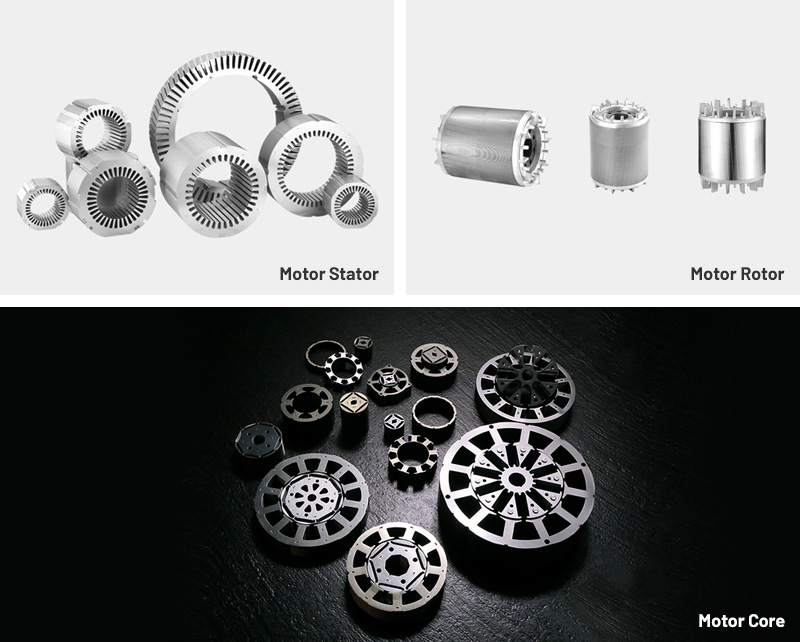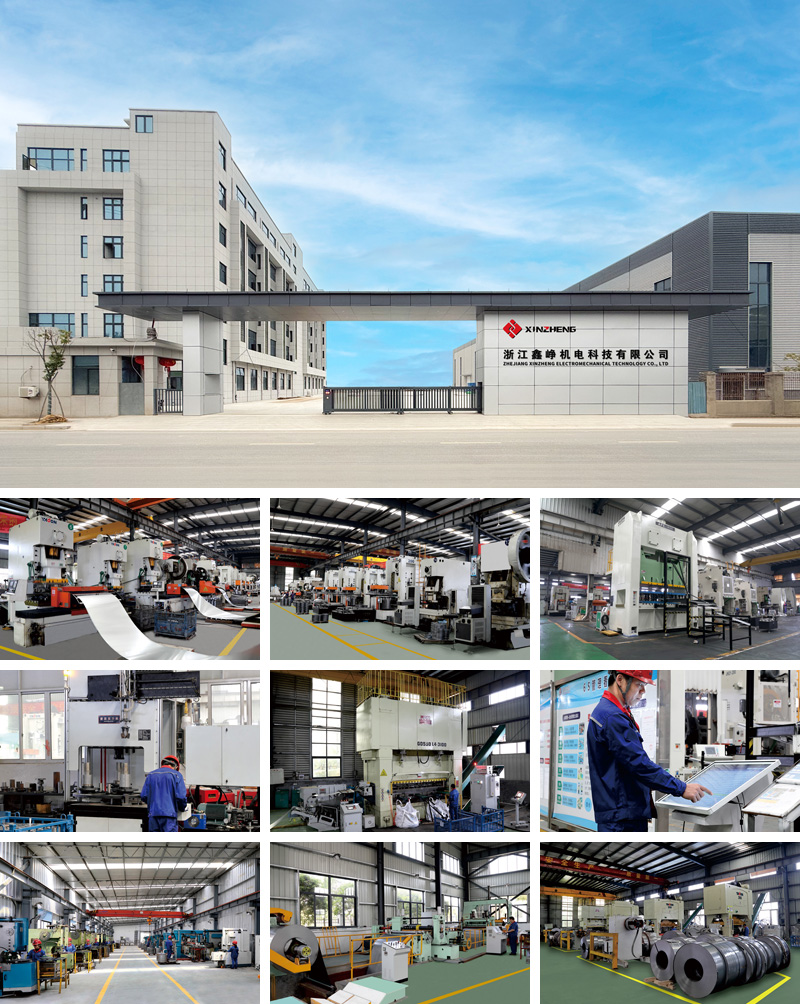Three-phase asynchronous motors are widely used across industrial, commercial, and infrastructure applications due to their robustness, simplicity, and cost-effectiveness. With industrial operations accounting for a significant portion of global electricity consumption, energy efficiency has become a critical factor. Reducing energy losses in motor operation can result in substantial cost savings while also contributing to sustainability goals and regulatory compliance.
Within the motor, the stator plays a pivotal role in converting electrical energy into a rotating magnetic field. The quality and design of the YB2 series motor stator laminations directly influence efficiency, heat generation, and operational reliability. As energy-efficiency standards rise globally, manufacturers increasingly rely on precision-engineered laminations to meet performance targets while maintaining durable, low-maintenance motors suitable for long-term industrial use.
Efficiency in asynchronous motors largely depends on the magnetic performance of the stator. Two primary types of energy loss occur in the stator core: eddy current losses and hysteresis losses. Eddy currents are circulating currents induced by alternating magnetic fields, generating heat that reduces overall efficiency. Hysteresis losses occur due to repeated magnetization cycles of the steel, which also contribute to thermal buildup.
Laminating the stator core into thin, insulated sheets mitigates these losses. Each lamination interrupts the path of eddy currents, while the high-grade electrical steel minimizes hysteresis loss. YB2 series stator laminations are designed to optimize flux distribution, ensuring efficient energy transfer, reduced heat generation, and improved torque stability. Proper lamination selection is critical for achieving both IE2/IE3 efficiency standards and long-term motor reliability.
YB2 series stator laminations are manufactured from high-quality silicon electrical steel, typically with 2–3% silicon content to increase resistivity and reduce core losses. The material provides high magnetic permeability, low hysteresis loss, and excellent thermal conductivity, supporting continuous-duty operation. Each lamination is coated with a thin, uniform insulating layer to prevent interlaminar conduction and suppress eddy currents.
The laminations are precision-stamped or laser-cut into a ring shape matching the stator’s slot and bore configuration. Typical lamination thickness ranges from 0.35 mm to 0.50 mm. Thinner laminations reduce energy loss, while sufficient mechanical rigidity ensures structural integrity under rotational stress and vibration.
Material Preparation: Coils of silicon steel are inspected, cleaned, and prepared for cutting.
Precision Cutting: Stamping dies or laser cutting tools create accurate lamination shapes with minimal burrs.
Insulation Coating: Each lamination receives a consistent insulating layer to electrically separate sheets.
Stacking and Core Assembly: Laminations are stacked and aligned to form a stable core, minimizing air gaps and maintaining concentricity.
Final Integration: Windings are inserted, and the stator is varnished or impregnated to enhance mechanical stability and thermal performance.
This process ensures that YB2 series laminations deliver consistent magnetic properties, thermal efficiency, and mechanical stability across all industrial applications.
The performance of YB2 series stator laminations depends on several critical factors:
Steel Grade and Magnetic Properties: High-grade electrical steel reduces core losses and enhances flux performance. Non-oriented steel ensures consistent magnetic behavior in all directions.
Lamination Thickness and Insulation Quality: Optimized thickness balances energy efficiency with structural strength, while high-quality insulation prevents short-circuiting between layers.
Dimensional Accuracy: Accurate stamping and alignment reduce torque ripple, vibration, and uneven heating.
Stacking and Bonding Techniques: Properly stacked laminations eliminate gaps, ensuring uniform flux distribution and mechanical integrity.
Thermal Management: Reduced core losses and effective heat dissipation prevent insulation degradation, maintaining motor reliability under prolonged operation.
Consistency in Production: Standardized manufacturing processes and quality control ensure uniform performance across batches.
Attention to these factors ensures YB2 series stator laminations support motors that meet energy efficiency and durability requirements.
Choosing the right supplier is essential for ensuring lamination quality and performance:
Material Certification: Suppliers should provide documentation on electrical steel grade, thickness, and magnetic loss characteristics.
Manufacturing Capability: The supplier must have precision cutting, stacking, and coating capabilities for consistent quality.
Quality Assurance: Batch traceability, magnetic loss testing, and dimensional inspections are necessary to ensure reliable performance.
Regulatory Compliance: Suppliers should meet international standards for energy efficiency and environmental regulations.
Delivery Reliability: Timely delivery and stable supply chains support uninterrupted motor manufacturing and maintenance.
A reliable supplier ensures the laminations consistently meet design specifications, supporting motor efficiency, longevity, and regulatory compliance.
Even with advanced laminations, several challenges persist in three-phase asynchronous motor production:
Excessive Core Losses: Poor material quality, improper lamination thickness, or inadequate insulation can increase energy losses.
Thermal Stress: Ineffective heat dissipation may cause insulation degradation and reduced motor lifespan.
Vibration and Noise: Misalignment or dimensional inaccuracies in the lamination stack can generate noise and mechanical vibration.
Batch Variability: Inconsistent lamination quality can lead to motors with varying efficiency and reliability.
Cost Constraints: High-quality materials and precision manufacturing increase production costs, requiring careful cost-benefit analysis.
Addressing these issues requires rigorous quality control, supplier management, and precise engineering design.
YB2 series stator laminations are employed in a variety of industrial and commercial applications where efficiency, reliability, and durability are critical:
Industrial Pumps and Compressors: Continuous-duty motors in chemical plants, HVAC systems, and water treatment facilities.
Fans and Ventilation Systems: Motors in commercial buildings, data centers, and industrial ventilation systems benefit from reduced energy consumption and noise.
Conveyor Systems and Material Handling Equipment: High-reliability motors in logistics and manufacturing operations rely on stable rotor-stator interactions.
Renewable Energy Applications: Motors in energy-optimized systems, such as solar and wind-powered equipment, benefit from reduced core losses.
Motor Retrofitting and Upgrades: Replacing older stator laminations with YB2 series components improves energy efficiency, reduces heat generation, and extends motor lifespan.
In all applications, high-quality laminations directly impact operational efficiency, torque stability, and long-term reliability.
Manufacturers are adopting silicon steel with refined grain structures, higher resistivity, and improved thermal properties to meet evolving IE3/IE4 efficiency standards. These materials further reduce eddy current and hysteresis losses while enabling thinner laminations without compromising strength.
Adhesive bonding and heat curing techniques reduce interlaminar gaps, improve thermal conductivity, and enhance mechanical stability compared to traditional stacking methods.
Motors increasingly operate with variable-frequency drives (VFDs), requiring stator laminations that accommodate fluctuating flux densities and thermal loads. Lamination design and slot geometry are evolving to maintain efficiency under these dynamic conditions.
Industrial buyers now demand traceable materials, batch-level documentation, and certifications for both energy efficiency and environmental compliance. Transparent suppliers are more competitive in global markets.
Automated stamping, stacking, and non-destructive testing improve precision, reduce variability, and ensure consistent lamination performance in high-volume production environments.
Q: Why are stator laminations important in three-phase asynchronous motors?
A: Laminations reduce eddy current and hysteresis losses, minimizing heat generation and improving overall motor efficiency. Without laminations, solid cores would suffer from higher energy loss and reduced reliability.
Q: How does lamination thickness affect motor performance?
A: Thinner laminations reduce eddy current losses but must maintain mechanical strength. Optimized thickness balances energy efficiency with durability and manufacturability.
Q: What is the role of insulation in stator laminations?
A: Insulation between lamination sheets prevents interlaminar conduction, maintaining magnetic efficiency, reducing heat buildup, and prolonging motor life.
Q: How critical is supplier selection for laminations?
A: Supplier quality directly affects lamination consistency, magnetic performance, and compliance with energy efficiency standards, impacting the motor’s operational reliability and lifespan.
YB2 series three-phase asynchronous motor stator laminations are a fundamental component for high-efficiency industrial motors. Through precise material selection, optimal lamination thickness, advanced insulation, and accurate stacking, these laminations reduce energy loss, manage thermal performance, and maintain mechanical integrity. For OEMs and industrial motor manufacturers, careful supplier selection, quality control, and process consistency are essential to ensure motors achieve operational efficiency, durability, and compliance with international standards. As energy regulations tighten and industrial efficiency demands rise, YB2 series laminations will remain central to reliable, cost-effective, and sustainable motor operation.
Product Category

Comprehensive Strength


Copyright © Zhejiang Xinzheng Electromechanical Technology Co., Ltd. All Rights Reserved.
This website uses cookies to ensure you get the best experience on our website.